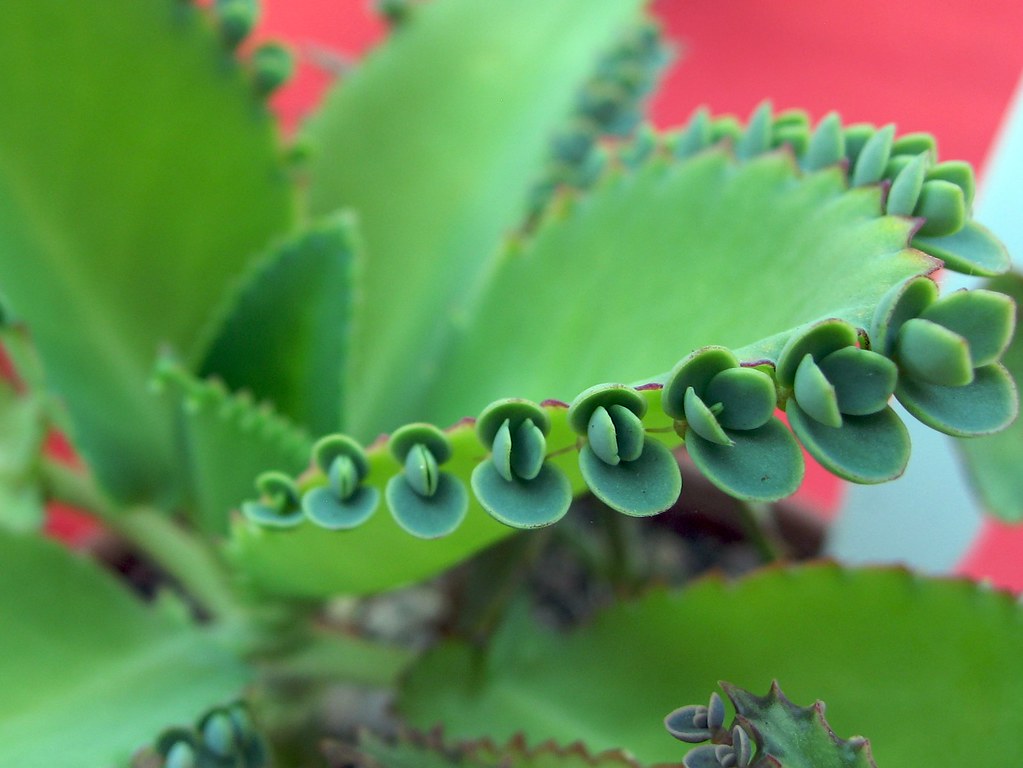The Mother of Millions, a fascinating and unique plant, has captivated gardeners and houseplant enthusiasts with its peculiar growth habit and captivating appearance. Belonging to the genus Bryophyllum, this succulent plant produces numerous tiny plantlets along the edges of its leaves, each of which can grow into a new plant, earning it the common name “Mother of Millions.”
Native to Madagascar, the Mother of Millions has adapted to survive in arid conditions. Its fleshy leaves store water, allowing the plant to endure prolonged dry spells. While it can be an attractive addition to succulent collections, care must be taken, as it can become invasive, and its sap is known to be toxic to pets.
A versatile and resilient plant, the Mother of Millions can thrive both indoors and outdoors. Its intriguing appearance, with slender, tapering leaves adorned with baby plantlets, can add interest to a garden or windowsill. This plant is also known for its beautiful, bell-shaped flowers that appear in the late winter or early spring.
| Attribute | Details |
|---|---|
| Common Names | Mother of Millions, Devil’s Backbone |
| Botanical Name | Bryophyllum daigremontianum |
| Family | Crassulaceae |
| Plant Type | Succulent |
| Mature Size | 1-3 feet tall |
| Sun Exposure | Full sun to partial shade |
| Soil Type | Well-drained, sandy soil |
| Hardiness Zones | 9-11 |
| Native Area | Madagascar |
Mother of Millions Care
Caring for the Mother of Millions is relatively straightforward, particularly if you have experience with succulents. This plant thrives in well-draining soil and requires adequate sunlight to flourish. Its unique ability to produce numerous offspring means that it can quickly spread, so containment may be necessary to prevent it from becoming invasive in outdoor settings.
Watering should be done with care, as over-watering can lead to root rot. This drought-tolerant plant prefers to dry out between waterings, so a light touch with the watering can is usually best.
Light Requirement for Mother of Millions
Full sun to partial shade is ideal for the Mother of Millions. While it can tolerate a range of lighting conditions, brighter light will encourage more robust growth and flowering.
Soil Requirements for Mother of Millions
Well-drained soil, such as a cactus or succulent mix, is essential. Sand or perlite can be added to regular potting soil to improve drainage if needed.
Water Requirements for Mother of Millions
Allow the soil to dry between waterings, as over-watering can lead to root rot. Reduce watering in the winter when the plant is dormant.
Temperature and Humidity
The Mother of Millions prefers temperatures between 60-75°F (16-24°C). It is not frost-tolerant and should be brought indoors in colder climates. Humidity is generally not a concern for this drought-tolerant plant.
Fertilizer
A balanced, water-soluble fertilizer can be applied sparingly during the growing season. Over-fertilizing can lead to weak growth and fewer flowers.
Pruning Mother of Millions
Pruning can be done to shape the plant and remove dead or damaged leaves. Take care when handling, as the sap can be irritating to some people.
Propagating Mother of Millions
Propagation is usually done through the tiny plantlets that form on the leaves. Simply remove and plant in well-draining soil.
How To Grow Mother of Millions From Seed
Growing from seed is rarely necessary due to the ease of propagation from plantlets. If desired, sow seeds in well-draining soil and keep moist until germination.
Common Pests & Plant Diseases
Mealybugs
Mealybugs can be controlled with insecticidal soap.
Root Rot
Avoid over-watering to prevent this common issue.
Common Problems With Mother of Millions
Leggy Growth
Insufficient light may lead to weak, leggy growth. Increase light exposure.
Invasive Spread
In outdoor settings, monitor and control spread as needed.
Pro Tips
- Use well-draining soil to prevent root rot.
- Provide bright light for healthy growth and flowering.
- Be cautious with watering; less is often more.
- Handle with care, as the sap can be irritating.
- Monitor outdoor plants to prevent unwanted spread.




